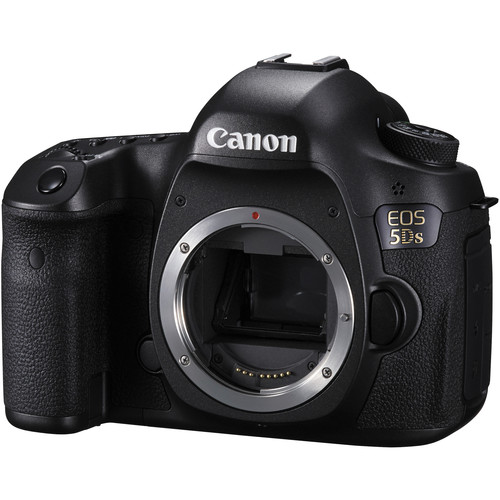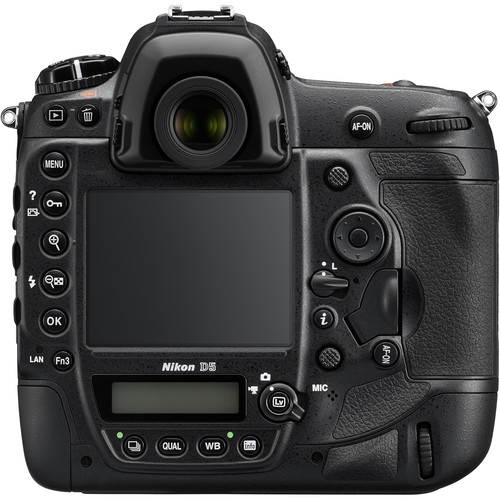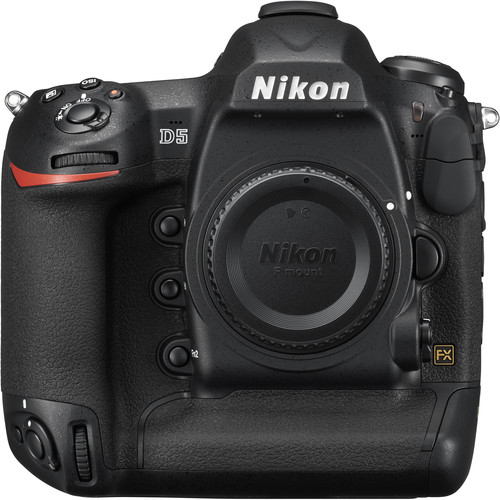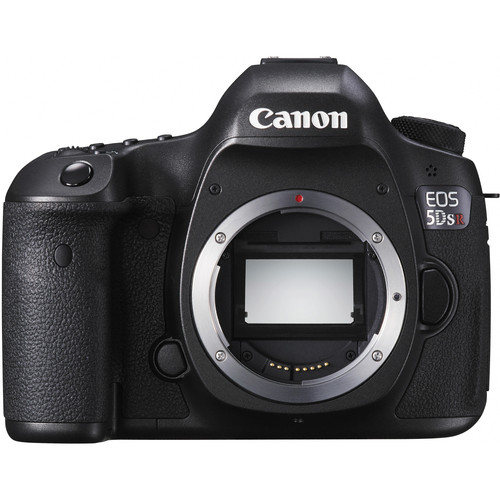
Canon EOS 5Ds 50.6 MP DSLR Camera
If you are just seeing this two part series, please go read the first part of my review entitled Canon 5Ds (Part I of II) with Unedited Sample Photos and come back here for my additional findings.
With a smaller pixel size (4.14µm vs 6.25µm) and diffraction that starts to kick in around f/7.1 (vs f/10), some will argue that the 5Ds only has one major benefit over the 5D Mark III - 2x more megapixels. Given the reality that most users will rarely print a file that full utilizes all 22.3 megapixels of the 5D Mark III (Super B/A3+ - 13x19 inches or 330x438mm), it is true that often those extra megapixels will go to waste – but they’ll still eat up your hard drive space 2x as fast (even more so if you use Photoshop). This begs the question what’s sense does it make to spend an extra $1200 (at the time this article was written) to upgrade?
For some these tradeoffs to take a step backwards from all the benefits the 5D Mark III has to offer. For others the answer to the upgrade question will be based on an emotional desire to have the latest and greatest technology Canon has to offer. The 5Ds certainly comes with plenty of bells and whistles not found on its cheaper sibling, so perhaps that reality alone might be enough for some people.
Read on to get the low down on why I both love this camera, yet I struggle to justify a valid reason to own it.
The 50 megapixel advantage

f/5.6 @ 24mm for 10 sec at ISO 100 with Canon 11-24mm lens
Click to see the incredible sharpness and detail in this unedited in-camera JPEG image
(Apologies for the tilt)
Does resolution make a difference even when you throw away pixels?
This is the question I kept asking myself so I decided to do a basic test that anyone could do themselves if they had the gear on hand to see the advantage of the extra megapixels.
To begin I just zoomed in to 200% and observed the amount of detail in the bookshelf image taken with the 5Ds using my 11-24mm lens at 24mm at f/5.6 and ISO 100. Notice the dithering pattern in the book spine – that’s really there but only a three cameras I’ve tested have ever captured it – the A7R, D810 and 5Ds:

5Ds Crop from 200% Zoom of Original File
Now If look at the 200% capture of the same section with the 5D Mark III using the same lens, aperture and ISO and notice it is (obviously) smaller and the detail looks smeared by comparison:

5D Mark III Crop from 200% Zoom of Original File
If I zoom in to 300% to get roughly the same size the difference is night and day:

5D Mark III Crop from 300% Zoom of Original File
The 5D Mark III isn’t able to capture the dithering details on the spine or the sharpness of the letters simply because there’s not enough sensor resolution to capture it.
This isn’t rocket science, but it does prove that if you have a lens that can take advantage of the extra resolution then the 5Ds is definitely going to take advantage of it with image details you can use.
Downsizing to 4k
Next I decided to discard the extra megapixels using Photoshop CC 2015’s Image Resizing (and yes, there are better ways like using Perfect Resize) :

Canon 5Ds Image Resize to 4k
Here’s the same thing done to the 5D Mark III image:

Canon 5D Mark III Image Resize to 4k
Below is a table that shows the results (with image links) to before and after, but you can see the results in the screen shots above already. Again, the image with more detail resizes more nicely than the one that doesn’t which also means the file size is larger after resize.
While this may be proving the obvious to some, it hopefully highlights to everyone that despite the pixel size disadvantage the extra megapixels come in handy when resizing your images.
So YES, even if you end up resizing your image for use on Instagram or Facebook, people WILL be able to see the difference. They won’t be able to quantify it, but the 5Ds images will appear more detailed and sharp.
Editing – The Real High Megapixel Advantage
I’ll admit that I liked some of the advantages of this camera enough that I found myself using it for some formal shots that I’ve had on my to-do list for years. When I edited these shots I really appreciated the extra pixels which helped to give Photoshop more data for gradients, shadow detail, and overall texture. This really made fixing flaws so much easier than normal because tools like the content aware patch and healing tools had more data to sample from.
Here’s an example of an image as it came out of the camera which was quite good even with its 8-bit sRGB in-camera JPEG:

In-camera JPEG Unedited – Click for Full Size
f/9 @ 70mm for 1/125 sec at ISO 100 using 24-70mm f/2.8L II lens
The best part about a high megapixel camera is editing details as you have so much data to fix flaws with less impact on the adjacent area. The ability to zoom in at a significantly greater level for spot healing.
Anytime I edit a photo I always start with a 16-bit ProPhoto RGB Original RAW file which immediate offers more color and dynamic range than the in-camera original JPEG. Anyone who edits their photos from the RAW originals knows that this RAW advantage still yields benefits when converting an image back to a 8-bit sRGB JPEG for display on the web. By having the extra megapixels with the 5Ds you get even more visible of benefits from your in RAW editing workflow because you have the well-known color benefits but now you also get more detail even when you downsize your image. Here’s the editing version with all of the benefits that extra megapixels and RAW data offer:

Edited Version - Click for full size
Extra resolution made correcting flaws super easy
and the RAW image had an incredible tonal range
in the background gradients and shadows
This really hit this point home for me because all of the discarded megapixels and color data still resulted in a image that had more color and detail than I’m used to seeing from my 5D Mark III. Yes, you may end up tossing all of those megapixels but the people who see your images will still see the benefits of you shooting with them versus a camera that has less resolution.
Get used to f/7.1 or lower
To avoid diffraction you’ll have to shoot at f/5.6 or less. With a camera that has such high resolution that your depth of field will be drastically reduced, this isn’t good news for landscape photographers. In the real world I found myself satisfied with the tradeoffs of using f/7.1 as you can see here in this long-exposure shot taken on tripod using a timer and mirror lockup:

f/7.1 @ 85mm for 6 sec at ISO 100 using a Canon 70-200mm f/2.8L IS USM
As I zoom in to 100% and explore on a PA322UHD 4K display I see that I’ve got pretty decent detail of images that the naked eye can’t even notice. Here’s a few fun examples:

100% crop of Pacific Science Center IMAX sign

100% crop of crane

100% crop of buildings in the far back section of the shot
This started to feel like the enhance scene in Blade Runner, and made me not really want to live in downtown for a fear of an invasion of privacy by 5Ds shooters!
The super high resolution means that you get more detail at the expense of a a more shallow depth of field, but with landscapes the circle of confusion calculations work in your favor. If you are a macro shooter, this is going to be a big problem so keep this in mind.
Patient wildlife shooters on a tripod might also be able to take advantage of both the added resolution and generous extra pixels for cropping to get closer to their subjects with high fidelity than they are currently used to enjoying. This is no sports camera, but in skillful hands amazing results are certainly possible.
Bookshelf Test
The following shots are done on a tripod with all camera default settings except I also enable RAW. The full gallery of bookshelf images can be found here, but I’ve included a few noteworthy images in this article.
I’ve already covered the sharpest aperture (f/5.6) at ISO 100 earlier in this review, so I’ll move on to a discussion about ISO. Here’s the same shot taken at the maximum native ISO:

f/5.6 @ 24mm for 1/6 sec at ISO 6400
As you zoom into 100% you can see the noise level (using the Low setting) is pretty bad and the details start to get smeared:

ISO 6400 100% Crop
For reference again, here’s the same shot at ISO 100:

ISO 100 100% Crop
With the requirement that you have to use significantly faster shutter speeds to get sharp shots hand held, this means you’ll quickly get into high ISO’s like this where the extra resolution benefits start to fade. This is one of the big reasons why I don’t think this camera is going to be for everyone as current 5D Mark III owners will feel like the noise level is a major step backwards.
For the record, this is the same level of noise problem I saw with the Nikon D800/D810, so this isn’t a problem unique to Canon. As a result, I would NOT consider any high megapixels camera like this to be suitable for vacations, parents, travel, concert or street photography.
Real World Shots
The following images come straight from in-camera JPEG’s using the camera default noise reduction settings. Most camera settings are the default with the exception of RAW+JPEG, a desired White Balance (only Shade or AWB), and a desired focus point. I chose to use the Standard Picture Style for all except for where noted.
Click here for a full gallery of unedited images.
All images are copyright Ron Martinsen – ALL RIGHTS RESERVED. You may not save, print, edit, modify or otherwise use any images featured in this article or the gallery without expressed written permission.

f/5.6 @ 24mm for 1/125 sec at ISO 1600 using 11-24mm lens
This was one of my many “almost” sharp shots but the slight camera shake despite shooting at over 5x the reciprocal of the focal length. As a result you can expect that hand held shooting is pretty much out of the question for most photographers.

f/5.6 @ 24mm for 1/125 sec at ISO 200
Extreme details, no matter how gnarly, are always fun to capture with this camera

f/5.6 @ 85mm for 1/100 sec at ISO 100

f/5.6 @ 24mm for 25/10 sec at ISO 100
Images like this have to be seen in print or on a 4k display to be fully appreciated
as 1080p just doesn’t cut it – too much detail is lost!
See the first part of my review entitled Canon 5Ds (Part I of II) with Unedited Sample Photos for more images as well as the complete gallery.
What about other models?
I know many of you are probably wondering about the 5Ds R about now, and I’ll cover that camera when I can finally get my review unit from B&H. I’ve also got a Sony A7R II in the queue will be reviewing it along with the 5Ds R later this year.
Until my my other reviews are ready you can go enjoy these reviews to see what I think of some of the others super high resolution cameras:
I don’t cover medium format cameras on this blog, and I don’t have any other super resolution cameras planned for review at this time (excludes models released after this article was written).
Conclusion
I can highly recommend the 5Ds for those who are doing detail critical work AND who will be using this camera with either studio lights or on a tripod. However I started this article with the question with “should you upgrade”, so I’ll finally go against the fanboys and marketplace momentum and recommend AGAINST getting this camera if you plan to use it as your primary or only camera that you shoot unsupported.
Unless you live in the dessert where you can always shoot at ISO 100 with high shutter speeds, you’ll need shutter speeds that are 3x what you are used to using (assuming you have the latest IS, else 5x+) to avoid motion blur in your hand held images. Extra resolution of blurry images will give you poor results no matter how you slice it as many former D800/D810 owners will tell you. As a result, I consider this a specialty camera for a limited audience or for those who will be using it as 2nd body to back up their lower megapixel Canon DSLR.
This advice applies to the Nikon D810 and Sony A7R II as well. High resolution is both a blessing (when used effectively) and a curse, so “don’t be that photographer” that’s blaming the camera or lens for a bunch of blurry shots that are caused by using a high resolution camera properly. Medium format shooters already know this so when you get to these resolutions you cross into a whole new world that’s not for the beginner or casual photographer! You have been warned.
Where to order
Click here to learn more or order on the 5Ds or 5Ds R on the B&H web site.
Other articles you may enjoy
If you enjoyed this article, you may also enjoy these articles about other Canon products:
Here’s also some other articles on this blog that you might enjoy:
Disclosure
If you make a purchase using links found in this article, I may make a commission. It doesn’t cost you a penny more, but it does help to support future articles like this.
NOTE: This site requires cookies and uses affiliate linking to sites that use cookies.
. Either way, your support is greatly appreciated!
This blog is intended for freelance writing and sharing of opinions and is not a representative of any of the companies whose links are provided on this site.
The opinions provided are of Ron Martinsen alone and do not reflect the view of any other entity



































































